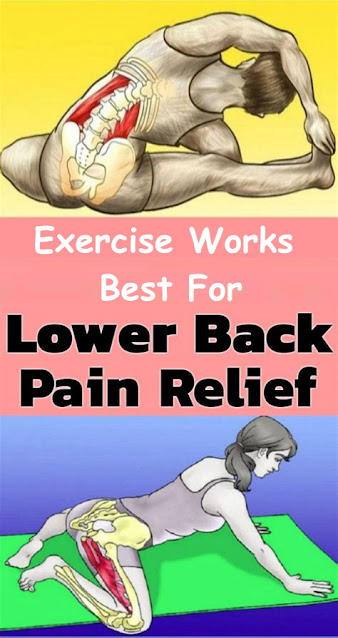Lower-back torment is exceptionally vote based in the general population it strikes.
"It's a general ordeal. You'd be an extremely phenomenal individual
never to have had a scene of back agony," says Chris Maher, a physical
specialist turned wellbeing scientist at the University of Sydney in
Australia. "It's a typical issue over the entire of the globe," he says,
regardless of whether it's North America, sub-Saharan Africa or rustic
India.
Episodes of low-back agony can last among days and years, and as often as possible hit once more.
A wide range of doohickeys and medications exist to mitigate the agony,
from ergonomic seats to extraordinary shoe embeds and Velcro back belts.
As indicated by Maher's examination, those don't appear to do squat to
avoid it.
Maher and his associates in Australia and Brazil needed to know whether
there were approaches that would lessen individuals' danger of
recovering a scene of intense low torment. So they gathered together 21
contemplates done far and wide, including more than 30,000 members
altogether, on the best way to treat and forestall bring down back
agony.
While back belts and shoe insoles didn't appear to offer an advantage,
they decided, practice decreased the danger of rehashed low-back torment
in the year following a scene somewhere in the range of 25 and 40
percent. It didn't generally make a difference what sort of activity —
center fortifying, high-impact exercise, or adaptability and extending.
Their survey was distributed Monday in JAMA Internal Medicine.
"On the off chance that there was a pill out there that could diminish
your danger of future scenes of back agony by 30 percent, I'd presumably
be seeing promotions on TV consistently," says Dr. Tim Carey, an
internist at the University of North Carolina in Chapel Hill who
composed a going with critique in the diary.
But then, he says, social insurance suppliers don't recommend practice
almost enough, given its adequacy. Carey says less than half of patients
take an interest in an activity program, regardless of whether they
have long haul back agony.
In inquiring about what docs do and don't recommend, Carey found that
aloof medications were substantially more typical, similar to ultrasound
or footing medicines, back belts, and orthotic insoles. "Recommending
insufficient medicines for patients may really occupy them and give them
a misguided sensation that all is well and good far from medications
that are really helpful," Carey says.
The error between what's best and what's most endorsed features a more
concerning issue: The wellbeing business is focused on sellable items,
and exercise isn't one.
"For what reason would we say we are not recommending a modest, viable
treatment? Some of it is, I figure, we don't consider practice being a
treatment the manner in which a tablet or a methodology or an active
recuperation treatment may," says Carey. "We're a reasonably
pill-arranged society. Pills are anything but difficult to take, and as a
specialist, pills are anything but difficult to endorse," he says.
Maher concurs. "We have this unreasonable impetus in our medicinal
services framework where we urge individuals to develop regarding drugs,
however, we don't have a similar framework to inspire individuals to
advance as far as physical movement," he says.
Carey thinks the business center is one of the issues that keep down
judicious medicinal consideration — by neglecting to support expansive
scale preliminaries on shoddy intercessions like physical movement.
A large portion of the examinations Maher explored included generally
little quantities of subjects, which keeps on anticipating definitive
research on the impact of activity and what kind specifically is
required, he says.
"That is an issue, in light of the fact that physical movement can be
unfathomably shabby to give to patients, though a great deal of these
medications that are being created are inconceivably costly," says
Maher.
The outcome is monstrous expenses — and likely a ton of avoidable back
agony. By a few evaluations, in a few years, the nation has spent about
$80 billion on spine issues including lower back agony, cash lost on
medications, imaging, medical procedure, torment drugs and the expense
of missed work days.
"When you begin bundling everything up, the expenses the world over are
appalling as far as how much low-back agony costs and that is the reason
avoidance is so imperative," says Maher.
What everybody can concede to is this: Above all, stay away from rest.
"What we do comprehend about the back it that the more you use it, the
more probable you are to keep it solid, fit and sound," says Maher.
Training about lower-back agony likewise helps, the investigation found.
Gracious, and something else that anticipates back agony — dumping
cigarettes. Similarly, as smoking will in general dry out the skin, it
additionally dries out the jam like plates that go about as the spine's
safeguards.
